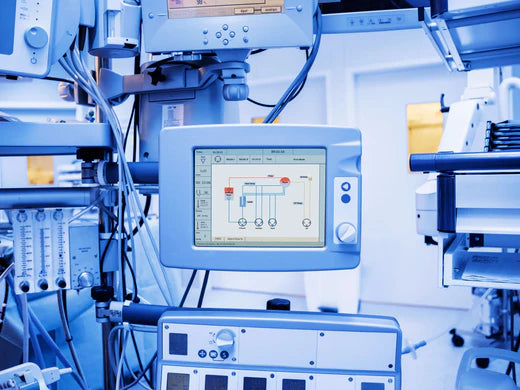Medical Device Market Trends You Need to Know

Share
The medical device market is experiencing significant changes, driven by advancements in technology, evolving healthcare needs, and shifting regulatory landscapes. To remain competitive in this dynamic field, professionals in the industry need to stay informed about the trends that are shaping its future. Here are some of the most important medical device market trends you should know:
1. Growth of Wearable Health Devices
Wearable health devices, such as fitness trackers, heart rate monitors, and continuous glucose monitoring (CGM) systems, have gained significant popularity in recent years. These devices allow consumers to track their health metrics in real-time and share data with their healthcare providers for better patient care.
According to TechCrunch, the wearable medical device market is expected to grow from $22 billion in 2020 to $70 billion by 2025, driven by the increasing adoption of digital health technologies. Companies like Fitbit, Apple, and Dexcom are leading the charge, developing products that monitor vital signs such as blood sugar levels, blood pressure, and heart health.
Why this matters: Wearables provide real-time insights that enable proactive healthcare management, empowering patients and reducing the need for frequent doctor visits. As more people embrace self-monitoring, the demand for wearable medical devices will continue to rise, creating new opportunities for innovation in the space.
Sources:
2. Telemedicine and Remote Patient Monitoring
The COVID-19 pandemic accelerated the adoption of telemedicine and remote patient monitoring, and these trends are likely to continue. Telemedicine allows healthcare providers to offer consultations via video or phone, reducing the need for in-person visits, while remote patient monitoring devices enable healthcare providers to track patients' health outside of the clinical setting.
According to Frost & Sullivan, the global telemedicine market is expected to reach $185.6 billion by 2026, with a CAGR of 26.2% from 2019 to 2026. Devices like remote thermometers, pulse oximeters, and smart stethoscopes are part of this trend, enabling healthcare providers to monitor patients with chronic conditions such as diabetes, hypertension, and COPD remotely.
Why this matters: Remote monitoring and telemedicine technologies are enhancing healthcare access, particularly in rural or underserved areas. These technologies also help manage costs
and increase the efficiency of care by allowing healthcare providers to monitor patients between visits.
Sources:
3. Artificial Intelligence (AI) and Machine Learning
AI and machine learning (ML) are increasingly being incorporated into medical devices to improve diagnostics, streamline workflows, and enhance patient care. AI algorithms are particularly effective in imaging, diagnostic testing, and predicting patient outcomes. For example, AI is being used to analyze medical images such as X-rays, CT scans, and MRIs to detect conditions like cancer, cardiovascular disease, and neurological disorders.
A report from Grand View Research predicts that the AI in the medical device market will grow at a CAGR of 40.8% from 2023 to 2030. The use of AI can significantly reduce human error, speed up diagnoses, and enable more personalized treatment plans.
Why this matters: The integration of AI in medical devices is revolutionizing the healthcare industry by improving the accuracy and speed of diagnoses. As AI technology becomes more advanced, it will continue to transform patient care, making healthcare more precise and tailored to individual needs.
Sources:
4. 3D Printing in Medical Devices
3D printing, also known as additive manufacturing, is changing the way medical devices are designed, produced, and customized. This technology allows for the rapid prototyping of devices and implants, as well as the production of highly personalized medical solutions. 3D printing is being used for creating custom prosthetics, dental implants, surgical tools, and even bioprinting tissues and organs.
According to 3DPrint.com, the 3D printing medical device market is expected to grow from $2 billion in 2020 to $6 billion by 2025. Companies like Stratasys and Stereolithography are leading the way in integrating 3D printing into the production of medical devices, enabling more affordable and precise manufacturing.
Why this matters: 3D printing offers significant advantages in terms of cost, customization, and production speed. It allows for devices to be tailored specifically to a patient’s anatomy, which can improve the effectiveness of treatments and patient outcomes.
Sources:
5. Personalized Medicine and Custom Implants
Personalized medicine is a growing trend that involves tailoring medical treatments and devices to the individual characteristics of each patient. This includes using genetic information, lifestyle data, and other personal factors to design customized treatments and devices. For example, custom orthopedic implants, such as knee replacements and spinal devices, are designed using 3D imaging technology to match the patient's exact anatomy.
According to MarketWatch, the global personalized medicine market is projected to grow to $2.45 trillion by 2026, largely driven by advancements in biotechnology, genetic research, and the integration of digital health technologies. Custom implants are just one example of how personalized medicine is transforming the medical device market.
Why this matters: Personalized medicine allows for more precise treatments that lead to better outcomes for patients. Custom implants and treatments reduce the risk of complications, improve the effectiveness of the device, and enhance the patient experience.
Sources:

